Cucumbers are one of the most ancient vegetable crops grown by man. Their active cultivation began at the time of antiquity. The name of the culture went from the Greek word "Aguur", which is translated as "non-free and immature." Indeed, this is one of the few vegetable crops that are used in emitted. And than the greener, the fruit is tastier. Cucumbers are successfully grown on a variety of soil types. If they put them too often, they become more sensitive to various diseases. Especially well they grow in sites where tomatoes, peas, corn or early potatoes were grown in the past season.
Practice has shown that this vegetable culture is well perceived by the introduction of organic fertilizers, due to which the structure of the soil is improved. Cucumbers in the period of growth requires a sufficient number of different nutrients. Growing is usually carried out in two ways to plant cucumbers: seedlings and reckless. It is also worth noting that this culture does not tolerate low temperature values. An acceptable indicator for its growth is the temperature of at least +15 degrees. Learn more about how to land and care for cucumbers, let's tell further.
Seed preparation for landing
Growing this culture with the help of seedlings makes it possible to get fruit much faster than in other way. So, when planting cucumbers to open ground, the first harvest is usually possible to get earlier for two weeks. When planting seedlings in a plant should be available 4-5 open leaves, which usually appear in 2-week germinals.
To grow cucumbers with a seedler, you need to take only full and large seeds for it. They must pass about a month of preset heating at a temperature of 24-26 degrees. The heated seeds will give plants that will bring fruits before the deadline. In addition, there will be less empty flowers. After the seeds warm up, they need to be disinfected. To do this, you can use a special infusion. For its preparation, 35 grams of crushed garlic with 120 grams of water are mixed (better cold). In the Nasty Seeds for seedlings should stay for about an hour.
The seeds are then folded into the tissue bag, and soaked in the nutritional solution for about 12 hours. After washing with clean water, they are stacked on a wet fabric and about 2 days are kept at a temperature of 23-24 degrees. During this time, they must completely swell. At the same time, they can slightly proceed. It will remain placed in a cool dark place (for example, a refrigerator) for 24 hours.
Seeds are dried usually in a small container with a height of about 120-130 mm. This will make it possible to receive seedlings in April. To prepare the soil mixture, you need to mix one part of wood sawdust, 2 pieces of humus and 2 peat parts. The solution still needs to add fertilizers. So, in 10 liters of this mixture it is necessary to dissolve 1 tbsp. l. nitroposki, as well as 2.5 tbsp. l. Wood ash. After that, the solution is perfectly mixed and superimposed into containers. When it is done, you can sow separated by gender in the container. After that a little pour. Ready seedlings in this way can be obtained after a month. When seedling will have two sprouted sheet, it is necessary to make fertilizers. It is mixed with 3.5 liters of warm water from 3 tsp. Nitroposki. When growing seedlings, it should be poured once a week, and it should be completely pouring the container.
Planting culture
To grow cucumbers most of all fit the soil from six parts of the peat, one piece of wood sawdust, humus and turf in a similar quantity. But it is not necessary for such a mixture. Cucumbers can be grown in almost any land. If a reckless way is used, then seeds, after they are swollen and sprouted, immediately planted into the open ground. The most important thing is that the temperature of the soil is not lower than + 13 ... + 14 degrees. Otherwise, the seeds in the ground simply rotate.
Seeds are placed in the soil at a depth of about 25 mm. And so that on one sq.m. No more than 7 plants were planted. It is better to plant several different varieties nearby to improve culture pollinability and increase yield. As for the soil, it must be loose (but in moderation) fertile. In addition, it must well hold water.
The root system of this plant is relatively small. Therefore, it is convenient to introduce organic fertilizers to the cultivation only at the landing pits themselves. First, they make a hole in a depth of about 400 mm, then the layer of organic fertilizer is placed in it, mix it with the soil, after which the ground falls asleep to which the cucumbers are planted. In the land fertilizer will begin to decompose, which will lead to heat release. This will help cucumbers to develop faster. In addition, fertilizers will serve as a source of nutrients, and throughout the season.
The plot where cucumbers will be grown, should be assessed as highlighted. It is necessary to ensure normal wind protection. For example, two rows of corn placed on all sides can be used when a bed device can be used as such protection.
The cucumbers grow best at temperatures from +24 to +28 degrees. If these indicators are lower than +15 degrees, it may lead to the oppression and slowdown of plant growth, and at any stage of development. In general, low temperatures are adversely affected by the fruits, slow down their growth. That is why in our areas the cucumbers are usually grown under the film.
Cucumber care rules
Care for cucumbers can not be called a difficult matter. Everything comes down to timely watering, soil looser, weeding and making feeding. Sometimes it is required to circumcise the shoots.
Care recommendations:
- Start loosening better after the appearance of the first germs. If you do it later, you can accidentally damage the plant. It is usually recommended to ploy between rows every 8-9 days. At the same time, the cucumbers are usually performed.
- Care in the open soil has its own characteristics. To improve the quality of the harvest, the plants are best given the form on their own. For this shoots are cut off. This is usually done with those sprouts that are over the third or fourth sheet. At the same time, it is necessary to break up the top kidneys of the plant. This procedure allows you to stimulate the appearance of side processes, which, in turn, improves the quality of the barriers.
- The plants are lengthened by the screens that need to be placed on all sides of the garden. Additionally, it is recommended to press them something to the ground. As a result of these actions, pressing roots will form. And the more roots, the greater the nutrients will flow to the plant and fruits.
- During the period of rising, the cucumbers need to water sufficient water. If moisture is too much, it can destroy the plant. In particular, the roots die, putrefactive diseases appear. With a lack of water, the growth of cucumbers slows down, besides, in this case, the fruits can become bitter. It is best to water the cucumbers with water, which managed to settle within a day.
- Make feeding need every two weeks. And the mineral and organic fertilizers need to be alternated. If the plant somewhere seemed roots, then they should be sprinkled with humus.
Watering and fertilizing
Establish attention on watering and feeding plants. It is important to comply with some recommendations:
- Summer cucumbers need optimal conditions. They are especially demanding on air humidity and regular irrigation. If the soil even dry out a bit, then this may cause some fruits to be bitter, and the bitterness cannot be eliminated. For watering it is best to use warm water. Watering with cold water adversely affects the fruits.
- To maintain humidity, it is useful to mulch the soil by organic. Due to this, you can prevent rapid drying and besides slowing down the growth of weed plants. In addition, watering the cucumbers will need less frequently.
- Occasionally, it is necessary to get a bed and loosen the soil. The roots of the plant should receive a sufficient amount of oxygen. With frequent watering, the soil without mulch is compacted. In order for the roots of the plant to receive a sufficient amount of air, you need to make garden pods in the ground punching depth 110-140 mm.
- Some fertilizers falling on plants can leave burns. That this does not happen, it is recommended to irrigate the wet soil with a solution only around the sprout so that the tool does not fall on the leaves.
- It should be known that in cold cloudy weather there is a slowdown in the growth of cucumbers. At the same time, the roots cannot absorb nutrients in sufficient quantities. Therefore, you should not make feeding with such weather.
- In order for one plant for the season more fruit, it is recommended to periodically collect a crop. It is no secret that different varieties of cucumbers produce fruit at different intervals. So, for example, greenhouse cultures are usually collected every 3-4 days. Another example, short-populated - they are going more often, namely, every 1-2 days.
- Sometimes this culture is not formed female flowers, which adversely affects the yield. To stimulate their education can take a break from watering, the soil has had time to dry.
The fight against disease
To prevent the distribution of gray mold when grown in the open field at the recommended tie cucumbers latticework. For this purpose the stakes are driven into the ground height of 1 m, the rope is tensioned between them, via which tie cucumber vines.
If the worshipers start up and began to fall, then this is a sign that the soil is too wet or the plant is not enough nutrients, which is possible if the cucumbers were planted too often. If this happened, then, first of all, the soil must dry. After that, mineral fertilizers are made or ash. Adding organic feeding should be carefully. Sometimes fuzariosis can be causative agents in fertilizers.
The deficit of nitrogen fertilizers can cause weak growth. At the same time, some organs of plants first become pale-green, and after some time they turn yellow and disappear. Symptoms The lack of nitrogen is usually first manifested on the lower leaves. Keep in mind that the leaves can become yellow in the event that the plant grows in the shade. Nitrogen deficiency can also lead to the fact that shoots, leaves and fruits are becoming less in size.
If the cucumbers are grown in a greenhouse, then problems with the lack of phosphorus and potassium practically does not happen. The fact is that phosphorus in the soil of the greenhouse most often enough for normal growth and development. The plants themselves consume it in small quantities. If the cucumbers will still experience phosphoric starvation, then the leaves of the plant become smaller. At the same time, they acquire a bluish shade. When the leaves dry out, they become almost black. The growth of the plants themselves slows down. Similar symptoms are also manifested with oxygen starvation and excess moisture in insulated soil. The same can occur at low temperatures.
With a lack of potassium, symptoms usually begin to manifest themselves at the edges of the lower leaves. So, they become brown, after which they dry and end up completely fall. The growth of interdosels slows down or stops. At the same time there are a lot of deformed hooked fruits. The latter may also appear in incomplete pollination.
When cucumbers are grown in a greenhouse, then plants may experience magnesium deficiency. The sign of this is the mezzhilic chlorosis, which is manifested in the form of yellowing tissue between the veins. The veins themselves remain green. If similar symptoms have been seen, then you need to make the necessary fertilizers. The first feeding is best done a month after the seedlings landing. At this time, the plant usually starts to bear fruit. The next fertilizer application is recommended once a week. As bait, it is recommended to use mineral fertilizers that can be purchased on the market, with the exception of potassium salt and potassium chloride. The fact is that the cucumbers do not tolerate chlorine.
As for potash fertilizers, it is recommended to use potassium sulfate or potash salter for cucumbers. Cucumbers, like many other vegetables, are still feeding such organic fertilizers like a coward and manure.

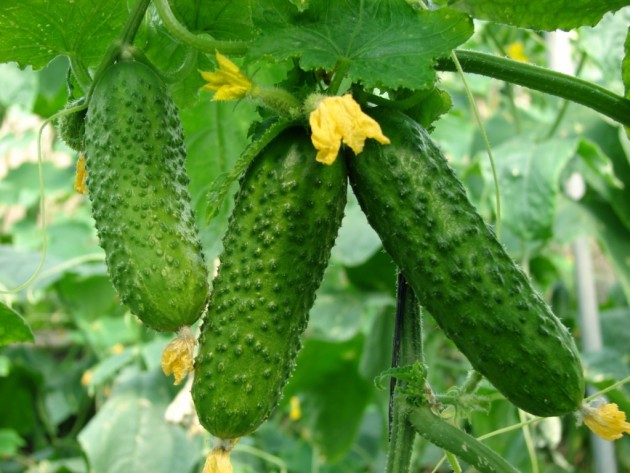
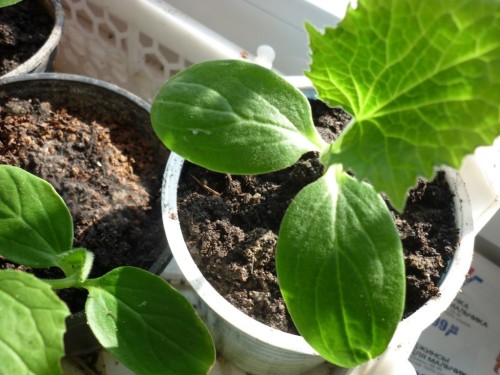
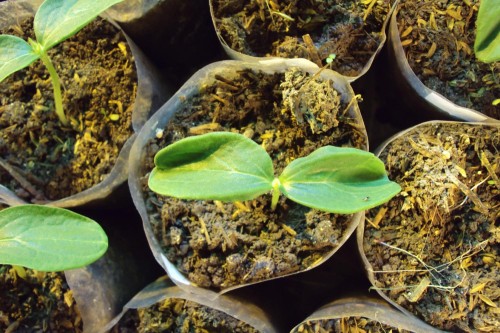
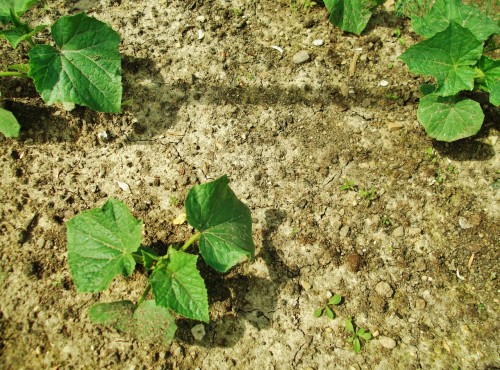
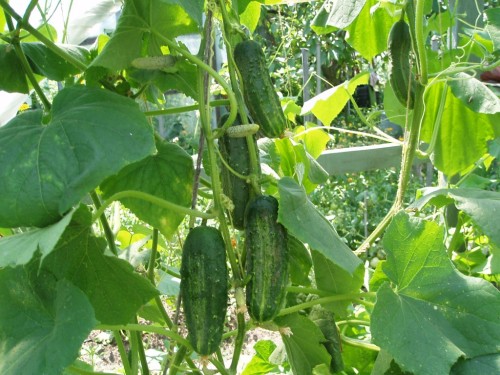
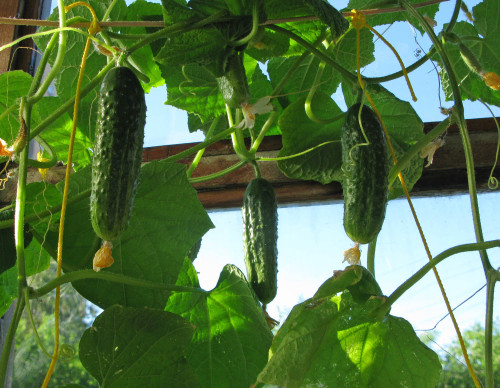
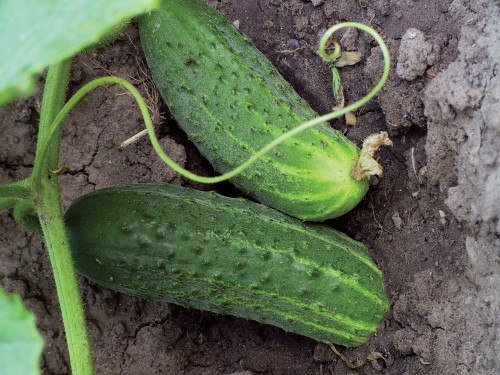












 Start a discussion ...
Start a discussion ...